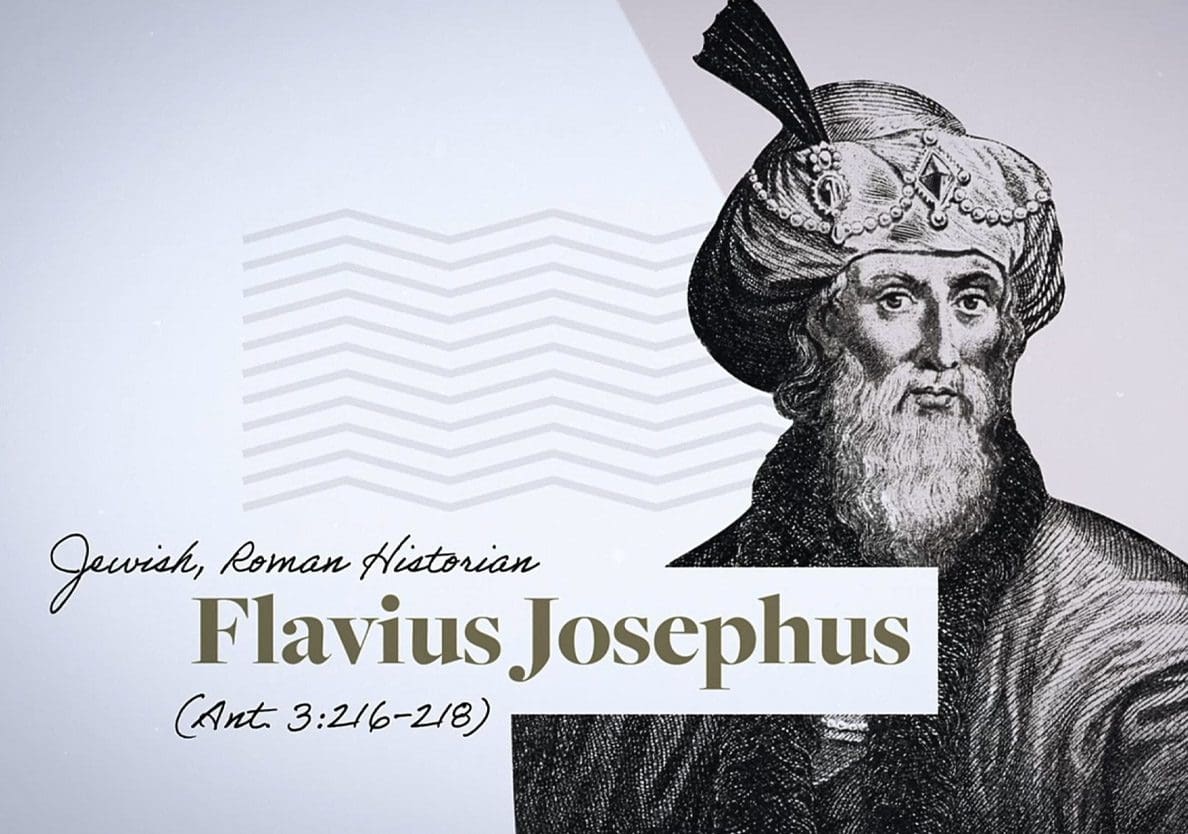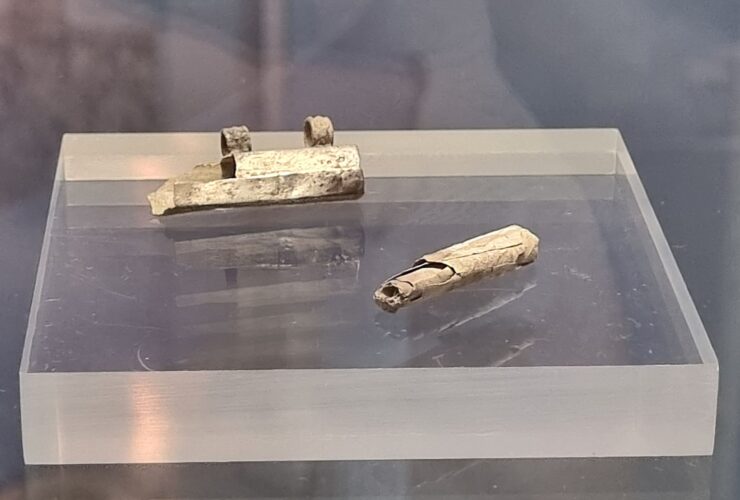The Urim and Thummim of the Old Testament are a bit of a mystery. They were held by the 9” by 9” ornate fabric breast piece of the high priest’s garb that was decorated by 12 stones, each carved with a name of an Israelite tribe. They were a part of the high priest’s outfit (Exodus 28) and appear to be the reason the priest’s breast piece was created: the “breast piece for making decisions” (Exodus 28:15). The ornate fabric pouch kept the Urim and Thummim close to the priest while he was serving. Twelve decorative stones each displayed a carved name of an Israelite tribe (Rueben, Simeon, Levi, Judah, Zebulun, Isaachar, Dan, Gad, Asher, Naphtali, Joseph, Benjamin). These stones were mounted to the breast piece in three rows with gold filigree settings.
Despite extensive descriptions of the High Priest’s outfit, as well as the 12 stones of the breast piece (Exodus 28, 39) the Bible is surprisingly silent on the Urim and Thummim themselves. What they were made of, how many of them there were, and their exact function are areas of debate. The only crystal-clear thing about them was their purpose: they were to be used for making decisions for the Israelite nation. This decision making was to be done in the presence of the Lord, presumably in the Tabernacle, by the High Priest, at the request of the leader of Israel. How this process worked has been a matter of discussion.

The Jewish Roman historian Flavius Josephus (Antiquities 3:216-218) links the breast piece with a special manifestation of God’s presence that involved the glowing of the stones on the breast piece and on the shoulders of the high priest. This association may stem from the possible meaning of Urim and Thummim as “Light and Perfection”. Other Jewish traditions envision messages from God being spelled out by a miraculous light or a vision sees the carved letters standing out from the names carved on the stones of the breast piece. In the Talmud, there is an idea that the Urim and Thummim were 4 stones, 3 of which had the names of the patriarchs (Abraham, Isaac, Jacob) and 1 with the word tribe carved on their surfaces. Together these stones plus the stones on the breast piece would represent the entire Hebrew alphabet, allowing for these messages to pop out to the high priest.
While these traditions are interesting, especially in light of the potential meaning of Urim and Thummim (i.e., “Light and Perfection”), it’s wise to examine the Biblical passages that allude to their use.
“The glowing of the stones on the breast piece and on the shoulders of the high priest…. may stem from the possible meaning of Urim and Thummim as ‘Light’ and ‘Perfection’.”
First off, while the terms may be plural the Scripture also may intend to describe two literal objects. This seems bolstered by their association with casting lots. In 1 Samuel 14:36-46, King Saul inquires of God by the Urim and Thummim. When God doesn’t respond, Saul gathers the nation for prayer and then sets designations for the Urim and Thummim – Urim will mean Saul, Thummim will mean Jonathan – then the scriptures say they “cast the lot” between them.
This term may explain the small number of mentions of the Urim and Thummim in the Bible, for something that Joshua and presumably the following leaders of Israel used quite often. The phrases “inquiring of the Lord” and “casting lots” may refer to the use of the Urim and Thummim, depending on context. This explanation does bring discomfort to many faithful students of Scripture. Casting lots was also a pagan form of divination (cleromancy) and as such was actually outlawed by the Mosaic Law (Leviticus 19:26, Deuteronomy 18:9-15). So how do we reconcile the apparent discrepancy between God outlawing divination while also sanctioning a certain kind of divination?


First, it’s helpful to note that the Urim and Thummim were only to be used in the presence of God, by the High Priest and the leader of the nation for making national decisions. It was their way of deferring ultimate leadership to God’s will. Anything apart from these Urim and Thummim utilized by the high priest was considered apostate. A regular citizen could not employ this method.
Second, the prophet Samuel’s chastisement of Saul may be helpful. He says that rebellion is like the sin of divination (1 Samuel 15:22-23). How is it like divination? Rebellion rejects the current authority and seeks to do things its own way as divination rejects the proper methods of communicating with the spiritual world and seeks to do it its own way.[1] So, when it came to divination, was Israel willing to follow God, or would they make excuses to justify becoming like the cultures around them?

Corie Bobechko is a daily co-host, speaker, and writer of Bible Discovery. She also hosts a YouTube channel that shows how history and archaeology prove the Bible. Her heart for seekers and skeptics has led her to seek truth and share it with others. Corie also has a Bachelor of Theology from Canada Christian College.
[1] Perhaps the presence of the Urim and Thummim in Israelite society was a test, much like how God had Israel settle among idolatrous nations. How much did they love Him?






